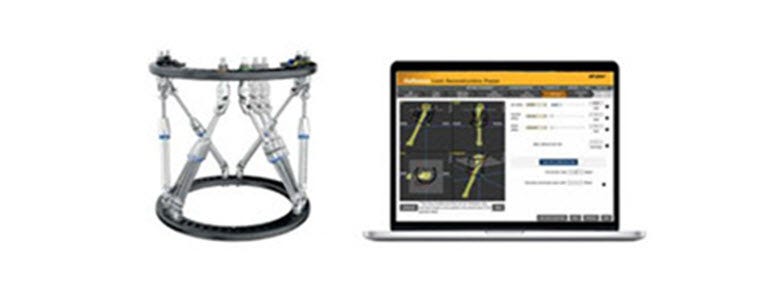August 7, 2017
Stryker's new Hoffmann LRF Hexapod hardware and online application uses an advanced measurement tool that could take deformity correction to the next level.
Amanda Pedersen

Stryker's foot and ankle business recently launched the Hoffmann LRF Hexapod hardware and online application, which features an advanced measurement tool that uses a mathematical algorithm to calculate solutions to correct a deformity.
The secret behind one of Stryker's newest products is a math. The company said its Hoffmann LRF Hexapod hardware and online application features an advanced measurement tool that uses a mathematical algorithm to calculate solutions to correct a deformity.
Unlike traditional pre-planning, surgeons can upload a patient's X-rays into the software, which then calculates a treatment solution based on manual inputs by the surgeon, creating a patient-specific plan for strut adjustments. The Hoffmann LRF Hexapod hardware features the core components of Hoffmann LRF with the additional flexibility of strut offsetting, which Stryker said allows the user to relocate the struts to a more optimal position.
According to John Sontich, MD, chief of orthopedic trauma at University Hospitals Cleveland Medical Center, the new product is a step forward for surgeons and patients involved with complex deformity correction and limb reconstruction procedures. For the patients, the device offers top actuating struts, as opposed to side actuating struts, which makes it easier to reach and manage the hardware.
"The pre-op allows us to create a frame before the surgery and use a plain X-ray to incorporate it into the program and to actually take measurements from a plain X-ray and calibrate it as well," Sontich told Qmed. "You can actually come into a deformity case with the frame pre-built and the right size."
The new software also allows surgeons to use the computer to plan out where to put which struts, and how to make it the most efficient. "In other words, to require the least strut change outs to get your deformity corrected," he said. "And that's always been my bugaboo because if you put a frame on and you require three or four strut changes on a particular area it's costly, the patient has to wait around, it bugs up the clinic, and it's really expensive. So if you can create a frame that does your correction and doesn't require as many strut changes, it's good for everybody."
When asked about the learning curve of the product, Sontich recommends surgeons start out doing simple cases with it first, and work their way toward more complex cases. Within five to 10 cases most surgeons would be comfortable with the product, he said. "You do as good a job, but it takes a little bit longer [in the beginning]," he said.
Amanda Pedersen is Qmed's news editor. Contact her at [email protected].
[Image credit: Stryker Corp.]
About the Author(s)
You May Also Like


